Centuries-old artefacts discovered hidden under new Metro site
Lying hidden in the middle of Sydney’s CBD, hundreds of artefacts dating back centuries have been uncovered. Here’s how it was uncovered.
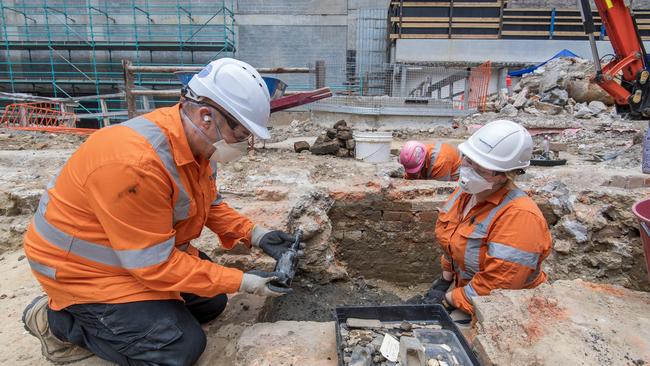
NSW
Don't miss out on the headlines from NSW. Followed categories will be added to My News.
The historic home of a swashbuckling Sydney merchant has been discovered alongside hundreds of artefacts dating back more than 200 years during the excavation of the Hunter Street Metro station in the city’s CBD.
Archaeologists working for Sydney Metro have unearthed sandstock brick footings from the 1820s, the foundations of the home and office of prominent Sydney merchant Prosper de Mestre, a French-born businessman who helped shape commerce in the British colony of NSW.
The excavation of the flagship station of the $25 billion Metro West line, which was completed earlier this month has revealed a treasure trove of artefacts including 200-year-old gun flint and bullet shells from Sydney’s first military barracks, which stood opposite the site.
Yet the most interesting find was the remains of de Mestre’s residence and counting house, where he managed his finances.
The puzzle of de Mestre’s life has been pulled together by his surviving descendants, his great great granddaughter, 81-year-old Shirley O’Donovan and her cousins including Maree Amor, with the help of historians.
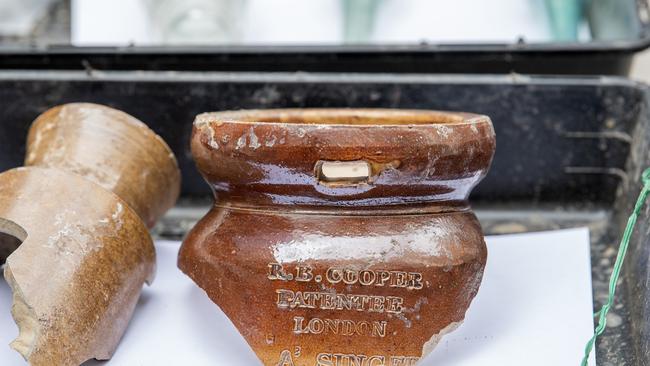
One of Sydney’s most influential and enigmatic figures, the well-travelled de Mestre became the second person ever to be naturalised in the colony, one of the only individuals born outside of the British Empire to gain citizenship at the time.
De Mestre dominated the Sydney business community from the 1820s to the 1840s, monopolising the importation of Chinese tea to the colony and in 1826 becoming one of the earliest directors of the Bank of NSW.
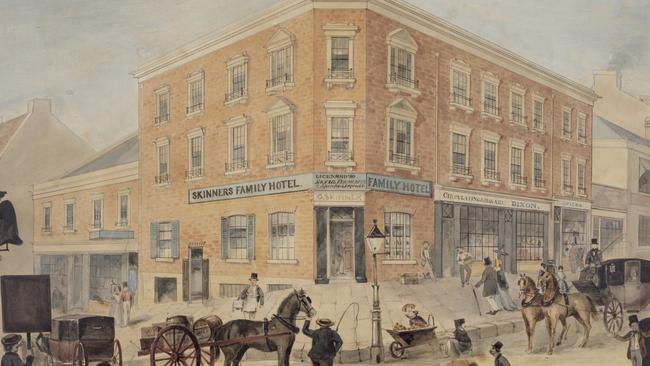
De Mestre was born on the eve of the French Revolution in the province of Brittany, the illegitimate son of a French military officer. His mother and father would later claim they had married before his birth in 1789.
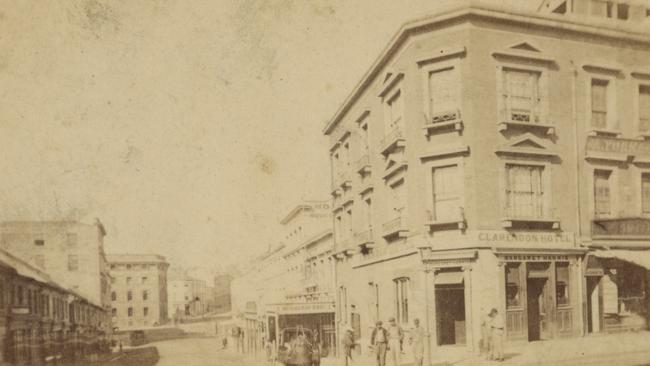
His father, lieutenant colonel André de Mestre, along with his family, was later posted to the island of Martinique in the French Caribbean, where in 1794 he had his head blown off by a cannonball by the invading British army.
At this time the young Prosper moved to Philadelphia, Pennsylvania where he was naturalised as an American citizen, before later travelling through China, Mauritius and India.
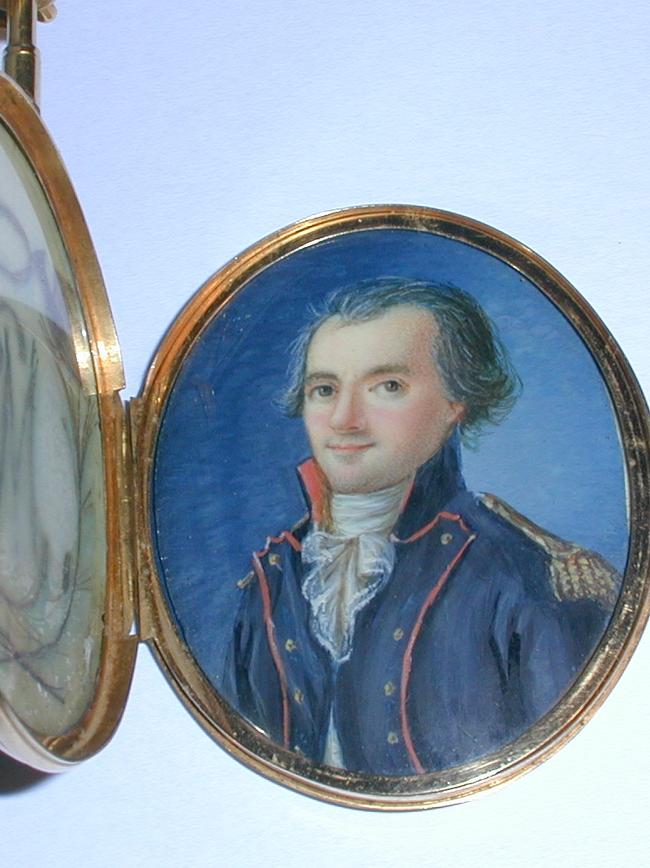
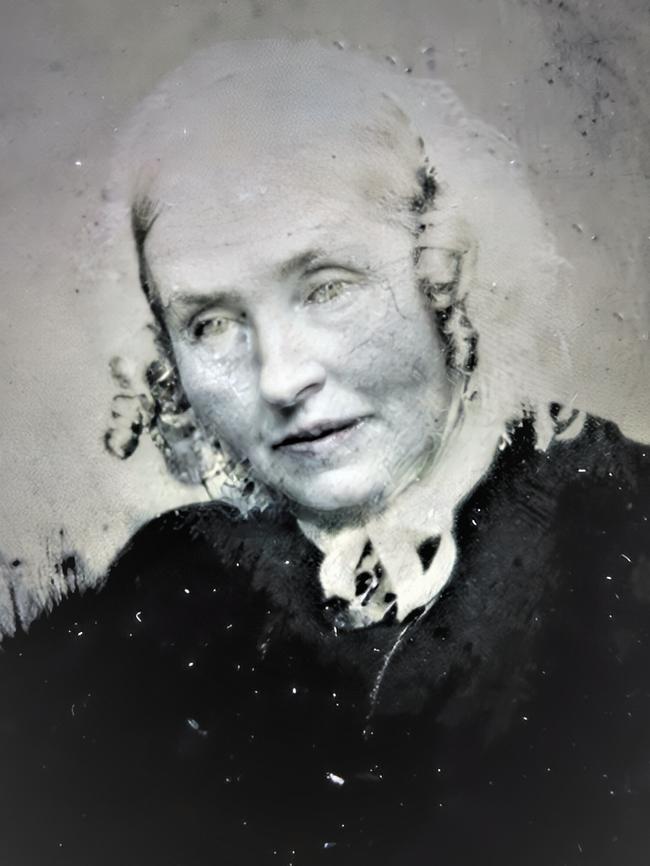
The globe-trotting 25-year-old finally arrived in Sydney in April 1818 onboard a schooner from Calcutta called the “Magnet”. He set himself up as an importer of foreign goods, leveraging his American and Chinese contacts to import tea.
“The other traders in Sydney were most upset at this,” Ms O’Donovan said.
“As he was an American he was not forced to buy tea from the East India Trading Company as other traders at the time were. This meant he could sell his goods for much lower prices.”
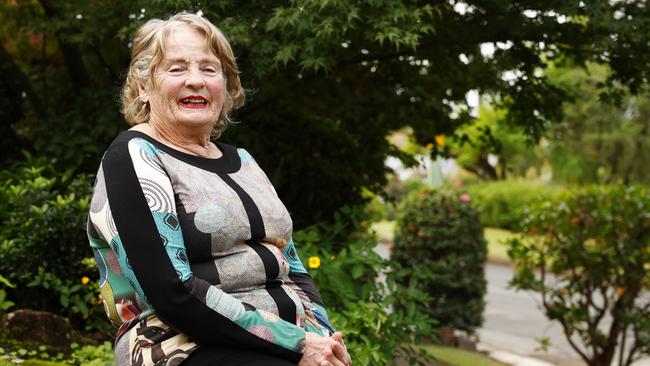
De Mestre successfully battled attempts by rival merchant Edward Eager to shut his business down by taking him to court on the grounds that as a foreigner he could not trade in the British colonies. Eager, a former convict, had his suit thrown out due to laws preventing former convicts from suing in court.
In 1821 De Mestre married Mary-Ann Black, the step-daughter of prominent Sydney merchant and magistrate Simeon Lord, acquiring the Hunter Street house as part of her dowry.
He went on to become a director of the Bank of NSW, a founder and director of multiple insurance agencies and an avid whaler, before his bankruptcy in 1844 and his own death shortly after.

His ten children went on to cement themselves in the fabric of the state’s colonial history, with his son, horse breeder Etienne de Mestre going on to train five Melbourne Cup winners in the 1870s. The record of the most Melbourne Cup wins was only broken a century later by Bart Cummings in 1977.
Ms O’Donovan said de Mestre’s descendants have been thrilled by the discovery of his house and hope that a display commemorating her ancestor can be included in the finished Hunter Street Metro station.
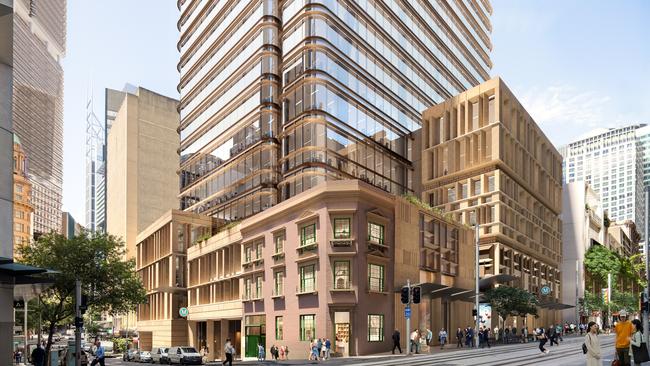
Senior heritage consultant for AMBS Ecology and Heritage, Ronan McEleney said the remains of de Mestre’s house were only found because they had been preserved under a paved road.
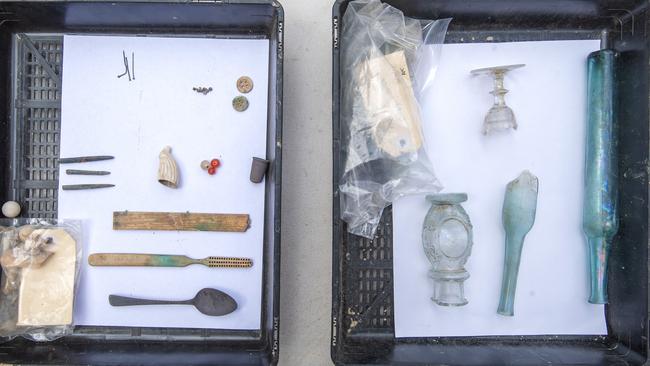
Mr McEleney, the archaeologist who headed up the 10 week excavation of the Hunter Street site said the remains had been hidden under a laneway between George Street and Hunter street, later known as De Mestre Place. De Mestre had built the laneway in the late 1830s while redeveloping the site with some of the area’s first shopfronts, meaning anything prior had survived.
“The site provides great insight into how quickly the city developed,” Mr McEleney said.
“The land was possibly used for dumping by the military across the road very early on, around the 1790s, which is where you get the bullets and ballast.

“By 1798 you’ve got the first building on the site and by the time de Mestre comes in the 1840s he has put up terrace housing on the site, with shop fronts. That’s really the start of it becoming a proper city street and that’s when you start seeing the city develop in a major way.”
Transport Minister John Graham said the artefacts, which will go on display at a community open day at the site on May 18 “serve as a reminder of how rich the history of the site is”.
“The Hunter Street metro station project is part of Sydney’s future, but these finds are a fascinating window into the city’s past,” he said.
Do you have a story for The Daily Telegraph? Message 0481 056 618 or email tips@dailytelegraph.com.au





